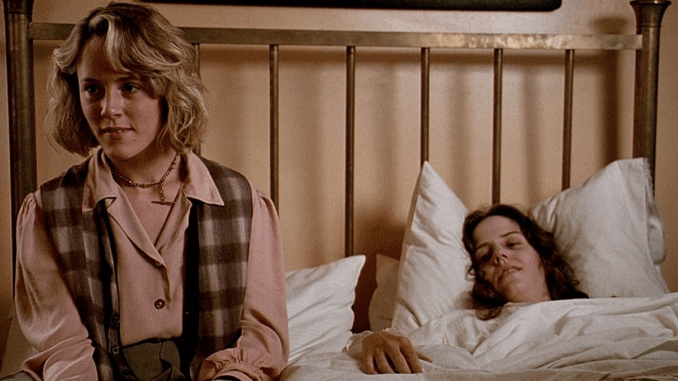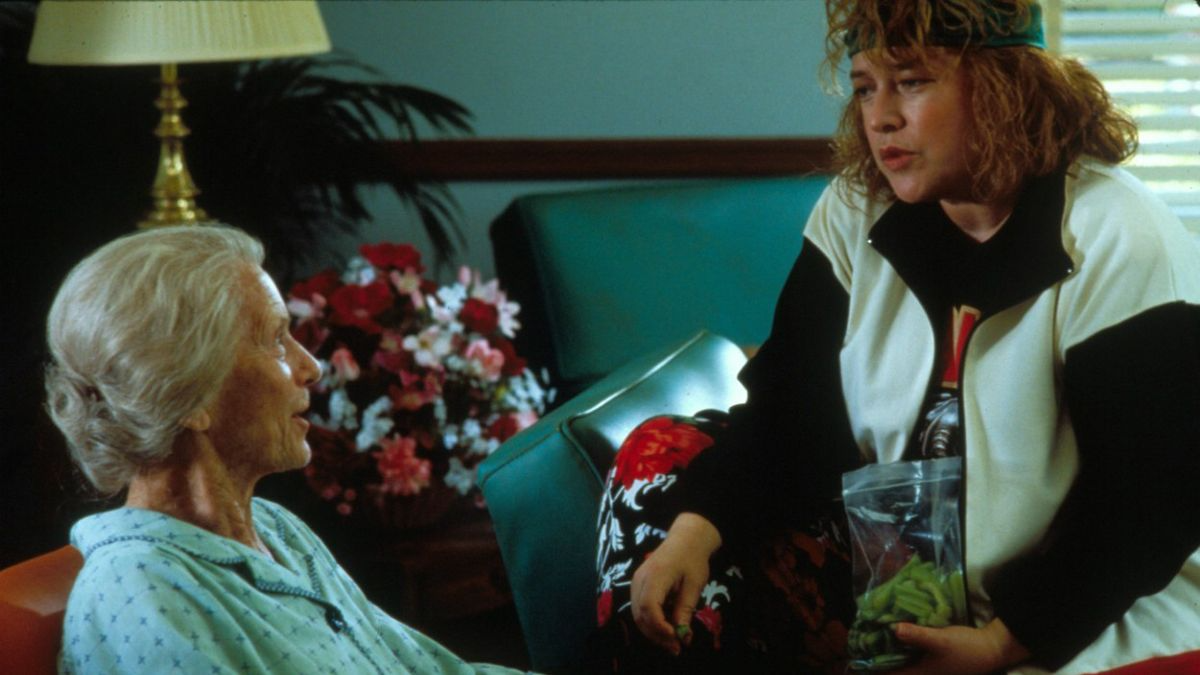
Years after the film’s release, there are still behind-the-scenes pieces of Fried Green Tomatoes that fans are “red-eyed” to see. One of the most notable revelations is that there was once an alternate open ending: the elderly Idgie appears to Evelyn, clearly confirming that Ninny’s story was true all along. It would have been a touching and emotional closure, linking the past and present in a single, heartfelt moment.
However, this scene was ultimately removed because test audiences found it confusing, blurring the line between fantasy and reality — a line the filmmakers preferred to keep delicate and mysterious.
In addition, there were several cut scenes that added even more emotional depth, particularly during Ruth’s funeral. The extended version showed more of the townspeople mourning, more quiet moments of grief, and subtle exchanges that highlighted how deeply Ruth’s loss affected everyone around her.

There was also a longer courtroom sequence in which the trial of Idgie and Big George felt more ambiguous — with witnesses hesitating, emotions running high, and justice portrayed not as black and white but as something far more human. These scenes, though filmed in full, were left behind in the editing room and now exist only in the studio’s archives, never officially released. To many fans, they remain the “hidden chapters” of Whistle Stop’s story.
What makes these behind-the-scenes details even more remarkable is the effort and artistry that went into creating Whistle Stop itself. The production team spent weeks exploring flea markets, antique stores, and abandoned barns to collect authentic period furniture, weathered tools, and faded signs that would bring the town to life. Every window, chair, and lamp was chosen with care. When filming finally ended, the crew made an unusual choice — instead of dismantling the café, they left it standing.
That real-life Whistle Stop Café still exists today as a beloved tourist attraction in Juliette, Georgia, where visitors can enjoy the same plate of fried green tomatoes, smell the same Southern spices, and feel as if they’ve stepped directly into the movie.
Even the famous “Southwestern Cam Tu” dish symbolizes much more than food. It stands for love, community, and the warmth of simple living — the values that the movie celebrates. Behind the scenes, the filmmakers paid extraordinary attention to detail to ensure that every visual element carried meaning. The small main street was dressed with old wooden signs, the faded paint on the café walls was carefully restored to look naturally aged, and the color palette of each scene was designed to evoke nostalgia — that soft, sunlit feeling of remembering something precious.
All these choices make us look back at Fried Green Tomatoes not only with affection but with a sense of discovery. Every tiny detail — every cut scene, every creative decision, every corner of Whistle Stop — tells a story of its own, one that fans continue to uncover even decades later. It reminds us that great films are not only made from the stories they tell, but from the countless unseen efforts that make those stories come alive.
